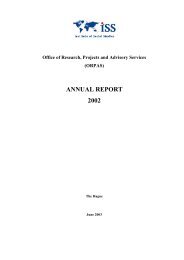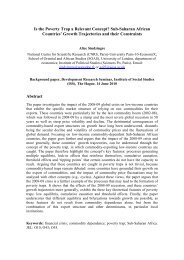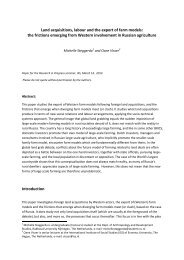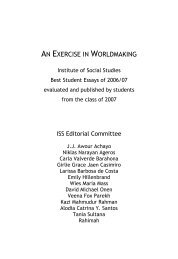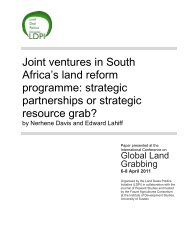AN EXERCISE IN WORLDMAKING 2009 - ISS
AN EXERCISE IN WORLDMAKING 2009 - ISS
AN EXERCISE IN WORLDMAKING 2009 - ISS
Create successful ePaper yourself
Turn your PDF publications into a flip-book with our unique Google optimized e-Paper software.
9 Tailoring Credit Programs along the Logic of the Poor 101<br />
Figure 2<br />
Respondents’ selection of preferred program characteristics<br />
Source: Hickson (Figure 2, 2001: 57)<br />
WHAT THE POOR PREFER<br />
Hickson (2001: 56) reports the findings of a Bangladesh study on microfinance<br />
programs being offered in slum areas. The survey reached out to<br />
41 slum households in Dhaka, and aimed to find out how attitudes towards<br />
financial services varied between very poor households and less<br />
poor households.<br />
While both clusters used the services of MFIs, the less poor made use<br />
of them more, with an average of three programs while poorer households<br />
were clients of 1.8. Most MFIs in the study provided the standard<br />
Grameen Bank model, allowing clients to take out one loan at a time,<br />
comprised of a single disbursement followed by repayments made every<br />
week over the next 12 months. If a client experienced shortage of money<br />
more than once within the same year, he or she would have to find another<br />
MFI to address the second need.<br />
Figure 2 shows how both clusters disliked collective loan responsibility<br />
and mandatory group meetings. They preferred flexible loan and savings<br />
products on frequency of transaction opportunities, size of deposits<br />
to be made, withdrawals, loan repayments, and maturity. Hickson adds<br />
that ‘neither the richer nor poorer households were interested in pro-




